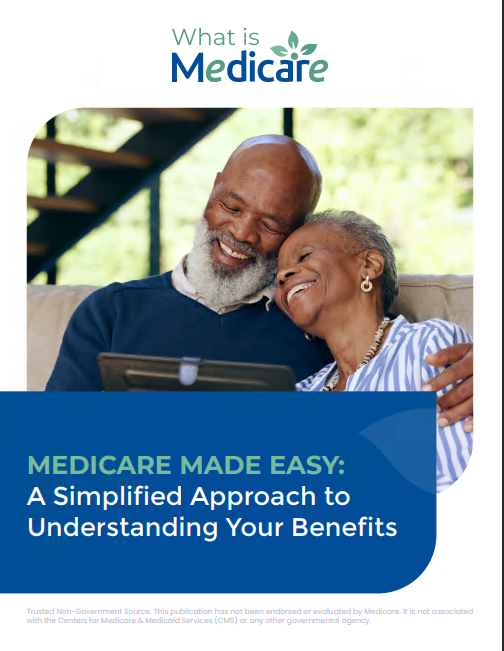Key Takeaways:
-
Understanding Medicare Part D is crucial to managing your prescription drug costs effectively in 2025.
-
Knowing the changes to out-of-pocket caps and deductible limits can help you avoid unexpected expenses.
Why Medicare Part D Matters for Your Prescription Costs
Medicare Part D covers prescription drugs, offering relief from the high costs of medications. For many people, this program is a financial lifeline, especially as prescription prices continue to rise. However, navigating its structure can be tricky, and failing to understand key aspects might lead to avoidable expenses.
Let’s break down five key facts about Medicare Part D in 2025 so you can stay informed and make the best choices for your healthcare needs.
1. The $2,000 Out-of-Pocket Cap in 2025
Starting in 2025, Medicare Part D introduces a major change—a $2,000 annual cap on out-of-pocket prescription drug costs. This cap eliminates the “donut hole,” a gap that previously left many enrollees covering substantial medication costs after reaching certain thresholds.
Here’s what you need to know:
-
Once your total out-of-pocket costs hit $2,000, you won’t pay anything further for covered prescriptions for the rest of the year.
-
This cap applies to both brand-name and generic drugs.
-
Costs that count toward the cap include deductibles, copayments, and coinsurance for Part D-covered medications.
This change provides significant financial protection, but it’s essential to keep track of your spending to ensure you’re taking full advantage of this benefit.
2. Deductibles Are Rising: What to Expect
In 2025, the maximum deductible for Medicare Part D plans has increased to $590. This is the amount you pay out-of-pocket before your plan begins covering the cost of your medications. Some plans may set their deductible lower, but they cannot exceed this limit.
How does this affect you?
-
If your plan has a high deductible, you’ll need to budget for this expense early in the year.
-
After meeting your deductible, you’ll move into the initial coverage phase, where cost-sharing (copayments or coinsurance) kicks in.
To manage this, you may want to spread your medication purchases across the year or discuss lower-cost alternatives with your healthcare provider.
3. You Can Spread Prescription Costs Over Time
New in 2025, the Medicare Prescription Payment Plan allows you to spread your out-of-pocket costs over the calendar year. This option is particularly useful if you anticipate hitting the $2,000 cap early in the year and want to avoid a large upfront expense.
Key details:
-
You must opt into this payment plan through your Medicare Part D insurer.
-
Payments are divided into manageable monthly installments.
-
This program applies only to out-of-pocket costs for covered prescription drugs.
While this feature won’t reduce your total costs, it can make budgeting easier. If you’re on a fixed income, this could be a valuable tool for managing your healthcare expenses.
4. Plan Costs and Coverage Vary Widely
Medicare Part D is offered through private insurers, and each plan has its own costs and list of covered medications (formulary). Although premiums and other expenses vary, the following general guidelines can help you choose a plan that works for you:
-
Premiums: Every Part D plan requires a monthly premium, but costs differ depending on the plan’s coverage.
-
Formulary: Check whether your current medications are included in the plan’s formulary. Some plans offer broader coverage for specific drug categories.
-
Cost-Sharing: Plans may have different copayments and coinsurance rates, which can significantly affect your out-of-pocket spending.
Review your Annual Notice of Change (ANOC) letter each year during the Medicare Open Enrollment period (October 15 to December 7). This letter outlines any changes to your plan’s costs and coverage for the upcoming year, ensuring you’re fully informed before making decisions.
5. Income-Related Premium Adjustments Apply to Higher Earners
If your income exceeds certain thresholds, you’ll pay an additional amount for your Medicare Part D coverage. Known as the Income-Related Monthly Adjustment Amount (IRMAA), this surcharge applies to individuals earning more than $106,000 or couples earning over $212,000 annually.
Here’s how it works:
-
The adjustment is based on your modified adjusted gross income (MAGI) from two years prior (2023 income for 2025 premiums).
-
The higher your income, the more you’ll pay in addition to your plan’s standard premium.
To avoid surprises, review your income carefully and plan for any adjustments. If you experience a life-changing event, such as retirement or loss of income, you can request a reassessment of your IRMAA amount.
How to Choose the Right Medicare Part D Plan
Selecting the right plan can make a significant difference in your healthcare costs. Here are some steps to simplify the process:
Compare Costs
Look beyond the monthly premium. Calculate the total cost of each plan, including deductibles, copayments, and coinsurance for your medications. The lowest premium plan might not always offer the best value if it has higher out-of-pocket costs.
Review the Formulary
Every plan has a formulary that lists covered medications. Be sure to check whether your prescriptions are included and at what cost-sharing level. Some plans may place drugs in higher tiers, resulting in higher out-of-pocket costs.
Check the Pharmacy Network
Using a pharmacy in your plan’s preferred network can save you money. Many plans offer discounts at specific pharmacies, so confirm that your preferred pharmacy is included.
Consider Additional Benefits
Some plans may include perks like medication delivery or extra support for managing chronic conditions. While these features aren’t essential for everyone, they could enhance your overall experience.
Enrollment Tips for Medicare Part D in 2025
Staying on top of deadlines and rules is essential to making the most of Medicare Part D. Here’s a quick refresher on enrollment:
-
Initial Enrollment Period (IEP): This is your first opportunity to enroll in Medicare, including Part D. It begins three months before the month you turn 65 and ends three months after.
-
Annual Enrollment Period (AEP): From October 15 to December 7 each year, you can switch Part D plans or join one if you didn’t enroll during your IEP.
-
Special Enrollment Periods (SEP): Certain life events, like losing employer coverage, allow you to enroll or make changes outside regular enrollment periods.
Remember, failing to enroll in Medicare Part D when first eligible could result in a late enrollment penalty. This penalty is a permanent addition to your monthly premium, so it’s essential to act on time.
Don’t Overlook Medication Reviews
One of the most effective ways to control your Part D costs is by periodically reviewing your medications with your healthcare provider. Ask your doctor about:
-
Generic alternatives that offer the same benefits at a lower cost.
-
Adjusting dosages or stopping unnecessary medications.
-
Splitting pills (only if approved by your provider).
Taking these steps can help you avoid overpaying for prescriptions and make the most of your Part D coverage.
Keep an Eye on Future Changes
Medicare Part D continues to evolve, with new rules and features introduced regularly. In 2025, the $2,000 out-of-pocket cap and the payment installment plan represent significant improvements, but further adjustments are likely in the coming years. Staying informed ensures you can adapt to these changes and optimize your healthcare strategy.
Stay in Control of Your Prescription Costs
Understanding the ins and outs of Medicare Part D is key to managing your healthcare budget effectively. From the $2,000 out-of-pocket cap to rising deductibles and the introduction of payment installment options, 2025 brings both challenges and opportunities for enrollees. Take time to review your plan, compare options, and stay informed about new features to make the most of your coverage.










